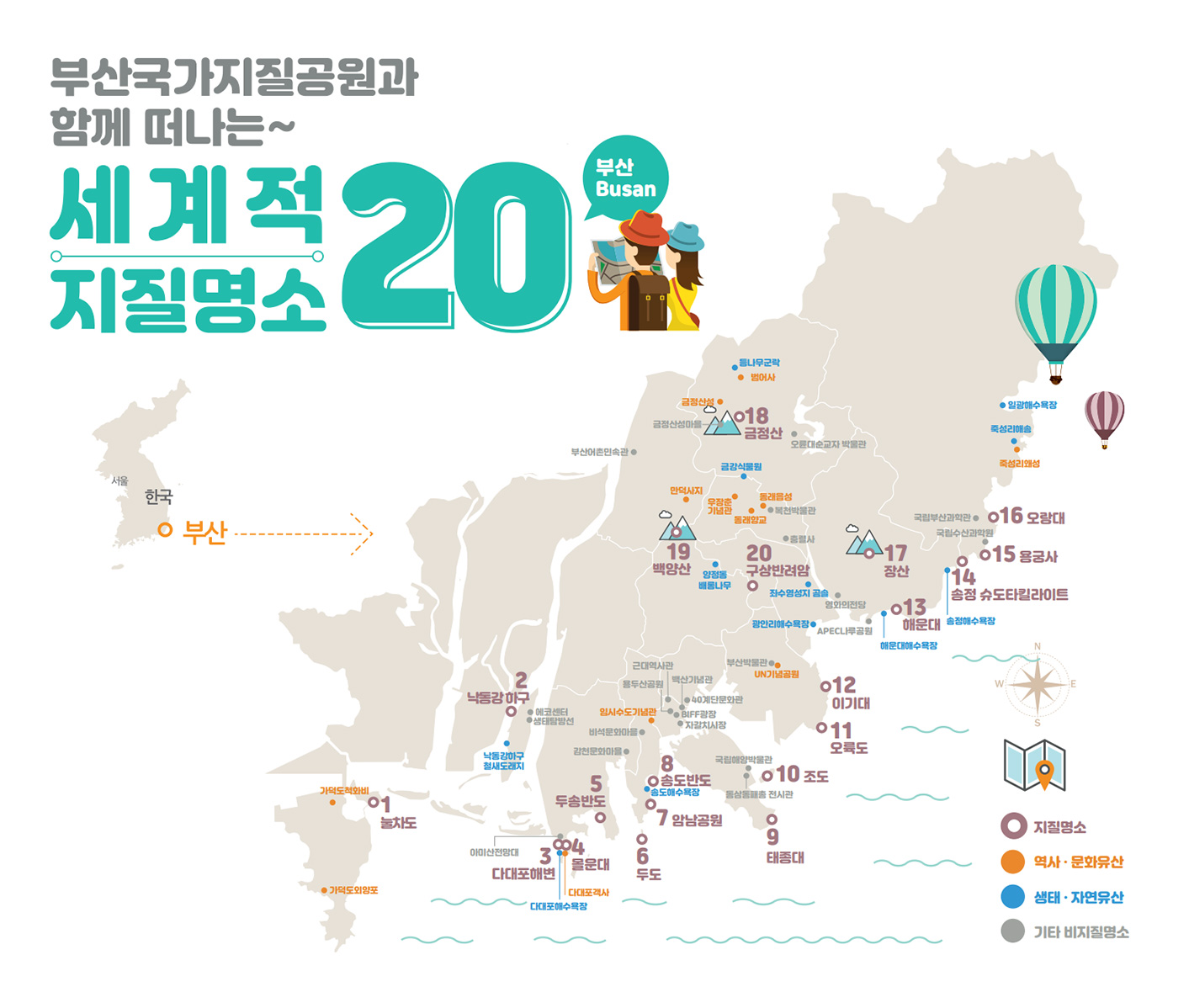Busan National Geopark

Busan National Geopark
Korea’s second largest city, with a population of 3.5 million, Busan has superb landscapes, including estuary, coast and mountains. The city, with diverse and unique scenic views, and geological and topographic heritage, teems with ecological, historical and cultural resources of great value and utility.
With geological heritage of various features with high educational value preserved in natural form, Busan National Geopark is Korea’s only urban geopark with well-developed geotrails equipped with educational and tourism infrastructure, including accessibility that can effectively deliver value and usefulness from the natural history perspective to numerous citizens and tourists.
The geopark has 12 geological attractions: Nakdonggang Estuary, Korea’s largest modern delta, a harmony of river and ocean; Morundae, a sea route to the ancient museum; Dusong Peninsula showing earthquakes that shook the paradise of dinosaurs; Songdo Peninsula, a lake where the god of fire, Vulcan lives; Taejongdae, a feast of lake-born rocks confronting the sea; Oryukdo Islands and Igidae Cliff, the symbols of Busan; Jangsan Mountain, Mother Earth ablaze; rocky Geumjeongsan Mountain where mythology sleeps; Orbicular Gabbro, natural craftwork produced by magma; Baegyangsan Mountain, a harmony of various rocks.